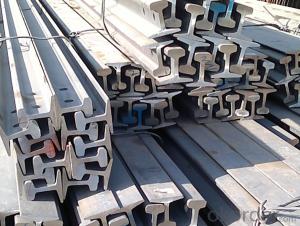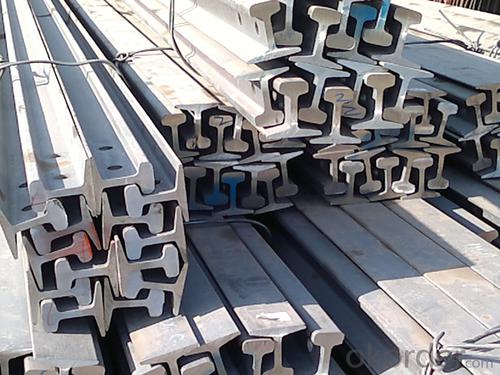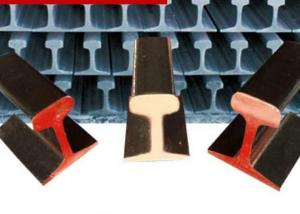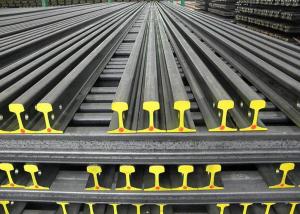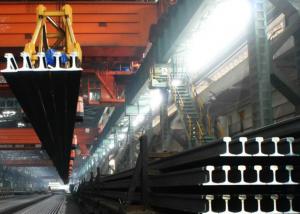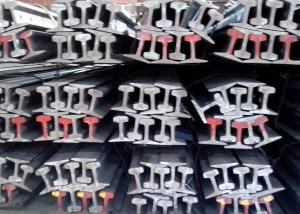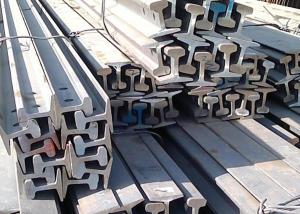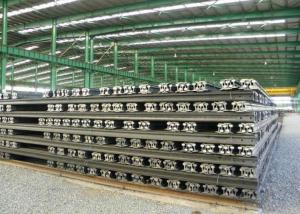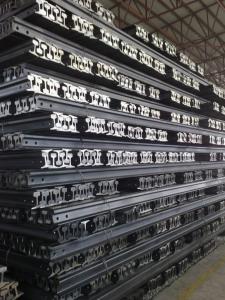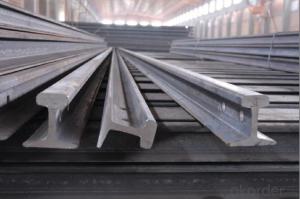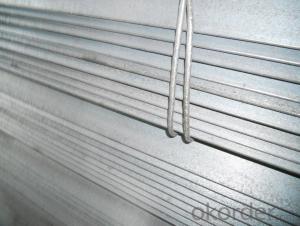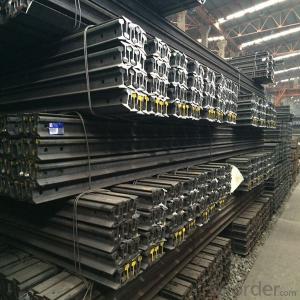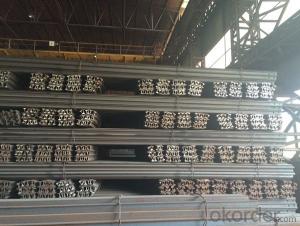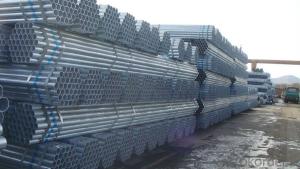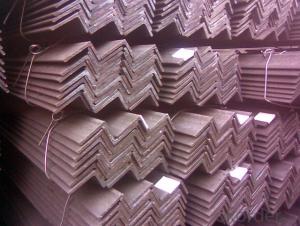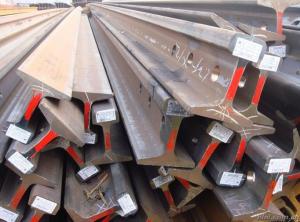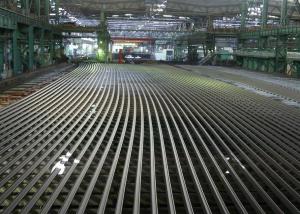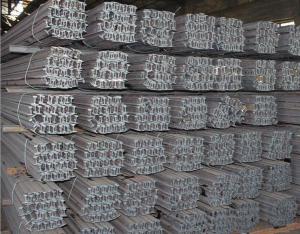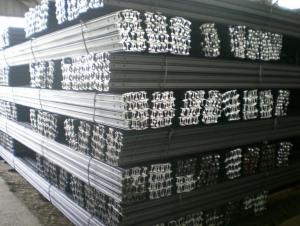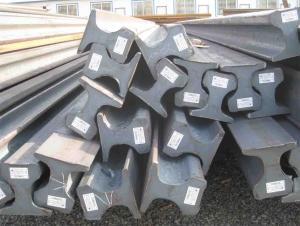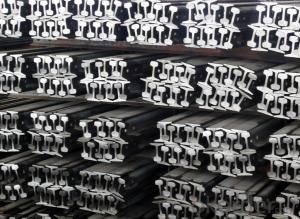Mild Steel Prime Hot Rolled Light Rail Steel
- Loading Port:
- China main port
- Payment Terms:
- TT OR LC
- Min Order Qty:
- 100 m.t.
- Supply Capability:
- 10000 m.t./month
OKorder Service Pledge
OKorder Financial Service
You Might Also Like
Specification
Product Description:
OKorder is offering Mild Steel Prime Hot Rolled Light Rail Steel at great prices with worldwide shipping. Our supplier is a world-class manufacturer of steel, with our products utilized the world over. OKorder annually supplies products to African, South American and Asian markets. We provide quotations within 24 hours of receiving an inquiry and guarantee competitive prices.
Product Applications:
Mild Steel Prime Hot Rolled Light Rail Steel are ideal for structural applications and are widely used in the construction of railways,mining rails, and transportation industries.
Product Advantages:
OKorder's Mild Steel Prime Hot Rolled Light Rail Steel are durable, strong, and wide variety of sizes.
Main Product Features:
· Premium quality
· Prompt delivery & seaworthy packing (30 days after receiving deposit)
· Can be recycled and reused
· Mill test certification
· Professional Service
· Competitive pricing
Product Specifications:
Manufacture: Hot rolled
Grade: Q235, 55Q,71Mn
Certificates: ISO, SGS, BV, CIQ
Length: 6m – 12m, as per customer request
Packaging: Export packing, nude packing, bundled
FAQ:
Q1: Why buy Materials & Equipment from OKorder.com?
A1: All products offered byOKorder.com are carefully selected from China's most reliable manufacturing enterprises. Through its ISO certifications, OKorder.com adheres to the highest standards and a commitment to supply chain safety and customer satisfaction.
Q2: How do we guarantee the quality of our products?
A2: We have established an advanced quality management system which conducts strict quality tests at every step, from raw materials to the final product. At the same time, we provide extensive follow-up service assurances as required.
Q3: How many tons of steel products could be loaded in containers?
A3: Usually the steel products are delivered by bulk vessel because of the large quantity and the freight. However, there are no bulk vessel enter some seaports so that we have to deliver the cargo by containers. The 6m steel product can be loaded in 20FT container, but the quantity is changed according to the size, usually from 18tons to 25tons.
Q4: what is the difference between actual weight and theoretical weight?
A4: All the section steel has two weights: actual weight and theoretical weight. Actual weight is the weighing out when the product delivered from the mill. Theoretical weight is calculated by pieces. The invoice can be based on each of them as your request.
Images:
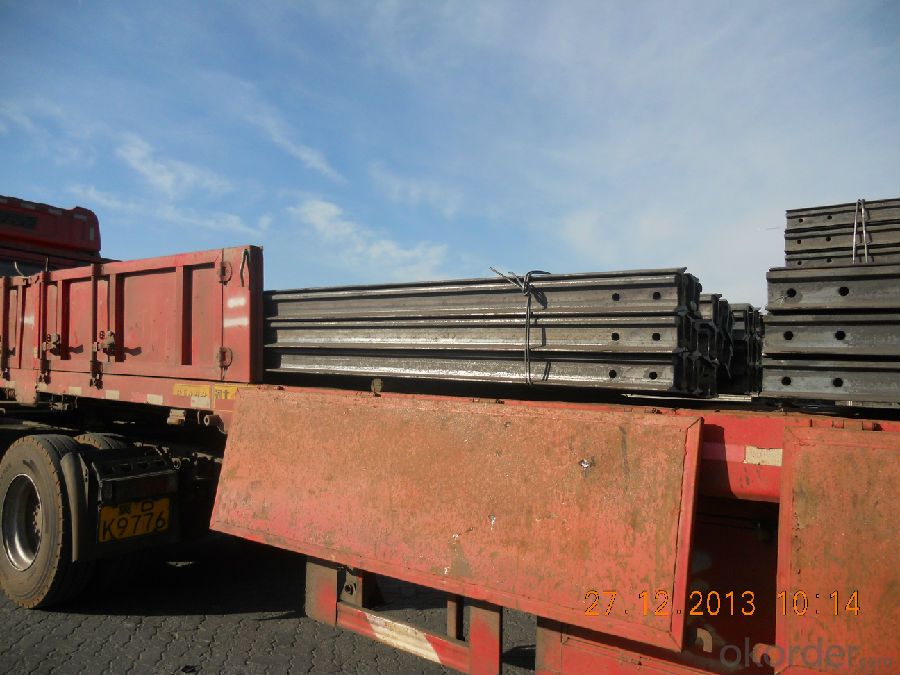
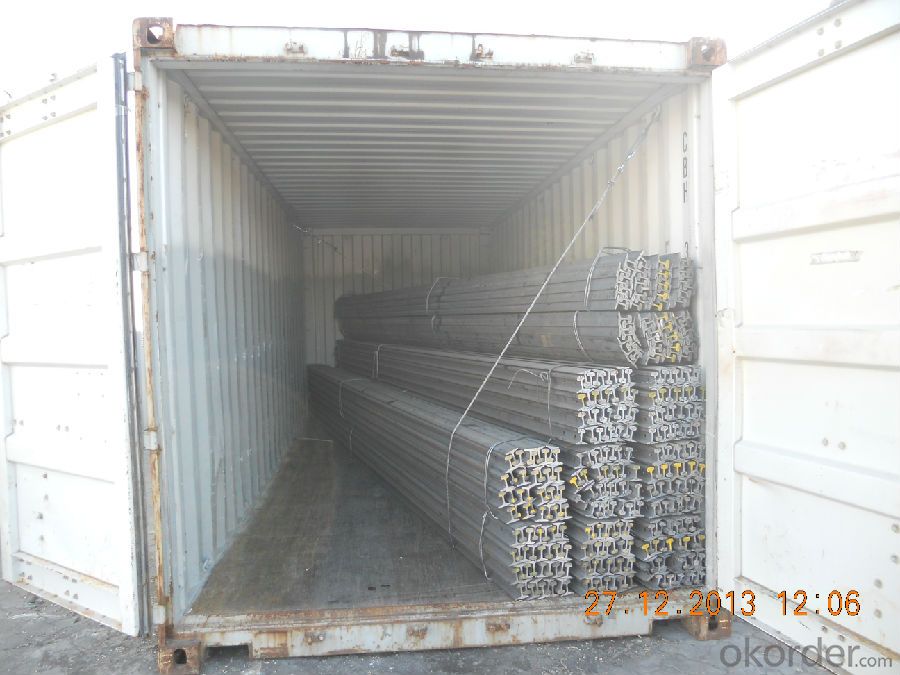
- Q: How do seamless rails solve thermal stress problems?
- Seamless line is not entirely seamless, but this gap is pulled very longOrdinary line every 25 meters, one rail seam, seamless rail with long rail and long rail, almost every 1 kilometers to set a rail seam. This rail joint is used to solve the temperature stress as common rail joints
- Q: How are steel rails tested for impact resistance?
- Steel rails are tested for impact resistance through a process known as the Charpy test. In this test, a small notched sample of the steel rail is subjected to a controlled impact from a swinging pendulum. The energy absorbed by the sample during the impact is measured, providing an indication of its toughness and ability to withstand sudden forces. This test helps ensure that steel rails can withstand potential impacts from heavy loads or accidents, ensuring the safety and durability of rail infrastructure.
- Q: What are the safety measures for working on steel rail tracks?
- When working on steel rail tracks, there are several important safety measures that should be followed to ensure the well-being of workers. These measures include: 1. Proper Training: Workers should receive training on the specific tasks they will be performing on the rail tracks and be familiar with the safety procedures and guidelines to follow. This training should cover topics such as how to identify potential hazards, how to use personal protective equipment (PPE), and how to operate machinery and equipment safely. 2. Use of Personal Protective Equipment (PPE): Workers should always wear the appropriate PPE when working on steel rail tracks. This includes safety helmets, high-visibility clothing, safety glasses, gloves, and steel-toed boots. PPE helps protect against potential head injuries, visibility issues, hand injuries, and foot injuries. 3. Communication and Signaling: It is crucial to establish clear communication and signaling protocols among workers. This ensures that everyone is aware of each other's location and actions, reducing the risk of accidents or collisions. The use of radios, walkie-talkies, or hand signals can be effective in maintaining effective communication. 4. Traffic Control: If working on active rail tracks, proper traffic control measures should be implemented. This may involve coordinating with the railway company to ensure that trains are aware of the work being conducted and implementing procedures such as flagging, barricades, or temporary signage to warn approaching trains and other workers. 5. Fall Protection: If working at heights, fall protection measures must be in place and utilized. This may include the use of harnesses, safety ropes, or guardrails to prevent falls from elevated areas such as bridges or platforms. 6. Equipment Safety: Regular inspections and maintenance of machinery and equipment used on rail tracks are essential to ensure their safe operation. Workers should be trained on how to properly use and operate this equipment to minimize the risk of accidents or malfunctions. 7. Hazard Identification and Reporting: Workers should be encouraged to identify potential hazards promptly and report them to their supervisors or safety personnel. This can include issues such as loose or damaged rails, unstable track conditions, or debris on the track. Addressing these hazards promptly can help prevent accidents or injuries. 8. Emergency Preparedness: Workers should be trained on emergency procedures and have access to emergency equipment such as fire extinguishers, first aid kits, and emergency contact information. Having a well-defined plan in place for responding to emergencies can save lives and minimize the severity of injuries. By adhering to these safety measures, workers can significantly reduce the risk of accidents and injuries while working on steel rail tracks. It is important to prioritize safety and ensure that all workers are equipped with the necessary knowledge and resources to perform their tasks safely.
- Q: Can steel rails be used in areas with high temperatures?
- Yes, steel rails can be used in areas with high temperatures. Steel is known for its high strength and resistance to heat, making it a suitable material for railway tracks even in hot environments.
- Q: What are the common causes of steel rail wear and tear?
- The common causes of steel rail wear and tear include heavy loads and frequent usage, friction between the wheels and the rails, corrosion from exposure to moisture and harsh weather conditions, improper maintenance practices, inadequate lubrication, and the presence of debris or foreign objects on the tracks.
- Q: What are the common causes of steel rail failures?
- The common causes of steel rail failures include fatigue, wear and tear, improper maintenance, excessive loads, and manufacturing defects.
- Q: How are steel rails protected from moisture?
- To prevent moisture damage, steel rails undergo a process called corrosion prevention. A commonly used technique involves applying a protective coating, such as paint or a specialized compound that resists corrosion. This coating serves as a barrier between the steel rail and its surroundings, preventing direct contact with moisture. Aside from the coating, steel rails are often designed with features that decrease moisture exposure. For instance, the rail's shape may be optimized to facilitate water runoff, preventing accumulation and reducing the chances of prolonged moisture contact. Additionally, drainage systems are installed to swiftly and effectively remove any water that does come into contact with the rails. Regular maintenance and inspection are essential for preserving the integrity of the protective coating and ensuring its effectiveness in preventing moisture-related damage. Promptly addressing and repairing any signs of wear, damage, or corrosion is crucial to prevent further moisture infiltration and potential deterioration of the steel rails. In summary, a combination of protective coatings, design features, and proper maintenance measures work together to safeguard steel rails from moisture and prolong their lifespan.
- Q: What are the considerations for using steel rails in urban areas?
- There are several considerations for using steel rails in urban areas. Firstly, steel rails provide durability and strength, making them suitable for heavy traffic and ensuring a longer lifespan compared to other materials. Additionally, steel rails offer excellent track stability, reducing maintenance requirements and ensuring a smoother ride for commuters. However, noise and vibration can be a concern in urban settings, so measures like adding resilient materials or implementing noise barriers need to be considered to mitigate these effects. Furthermore, the installation and maintenance of steel rails may require road closures or disruptions in busy urban areas, necessitating careful planning and coordination. Lastly, the cost of implementing and maintaining steel rails should also be taken into account when considering their use in urban areas. Overall, these considerations play a crucial role in determining the feasibility and benefits of using steel rails in urban environments.
- Q: How are steel rails affected by extreme temperatures in deserts?
- Steel rails are affected by extreme temperatures in deserts in several ways. Firstly, during hot desert days, the intense heat can cause the steel rails to expand. This expansion can lead to buckling of the tracks, which can be dangerous for trains traveling on them. To prevent this, rail networks in desert regions often use expansion joints or leave gaps between rail sections to allow for thermal expansion. On the other hand, during cold desert nights, the steel rails can contract due to the low temperatures. This contraction can cause the rails to shrink and create gaps between the sections. These gaps can be problematic as they can affect the stability and alignment of the tracks, potentially causing derailments. To mitigate this, rail operators may use special fasteners and welding techniques to ensure the rails remain securely connected even in extreme cold temperatures. Additionally, extreme temperature fluctuations in deserts can also lead to the degradation of the steel rails over time. The constant expansion and contraction cycles can weaken the structural integrity of the rails, making them more susceptible to wear, cracking, and corrosion. Consequently, regular inspections, maintenance, and repairs are necessary to ensure the safety and durability of the rail infrastructure in desert regions. In summary, extreme temperatures in deserts can pose challenges for steel rails. The expansion and contraction due to high and low temperatures can cause buckling, gaps, and structural degradation. However, proper engineering and maintenance practices can help mitigate these effects and ensure the safe operation of trains in desert environments.
- Q: Can steel rails be used in heavy haul railways?
- Yes, steel rails are commonly used in heavy haul railways due to their durability, strength, and ability to withstand heavy loads and frequent use. Steel rails provide stability and support to the railway tracks, making them suitable for transporting heavy freight over long distances.
Send your message to us
Mild Steel Prime Hot Rolled Light Rail Steel
- Loading Port:
- China main port
- Payment Terms:
- TT OR LC
- Min Order Qty:
- 100 m.t.
- Supply Capability:
- 10000 m.t./month
OKorder Service Pledge
OKorder Financial Service
Similar products
Hot products
Hot Searches
Related keywords
